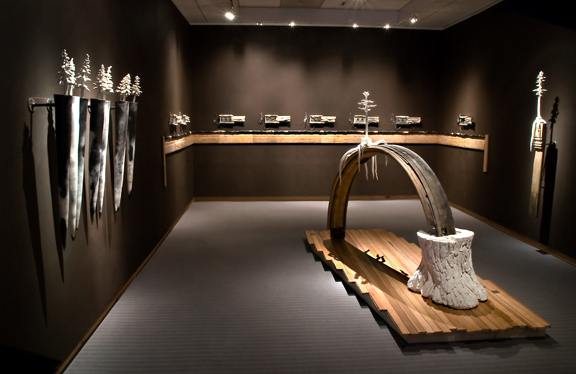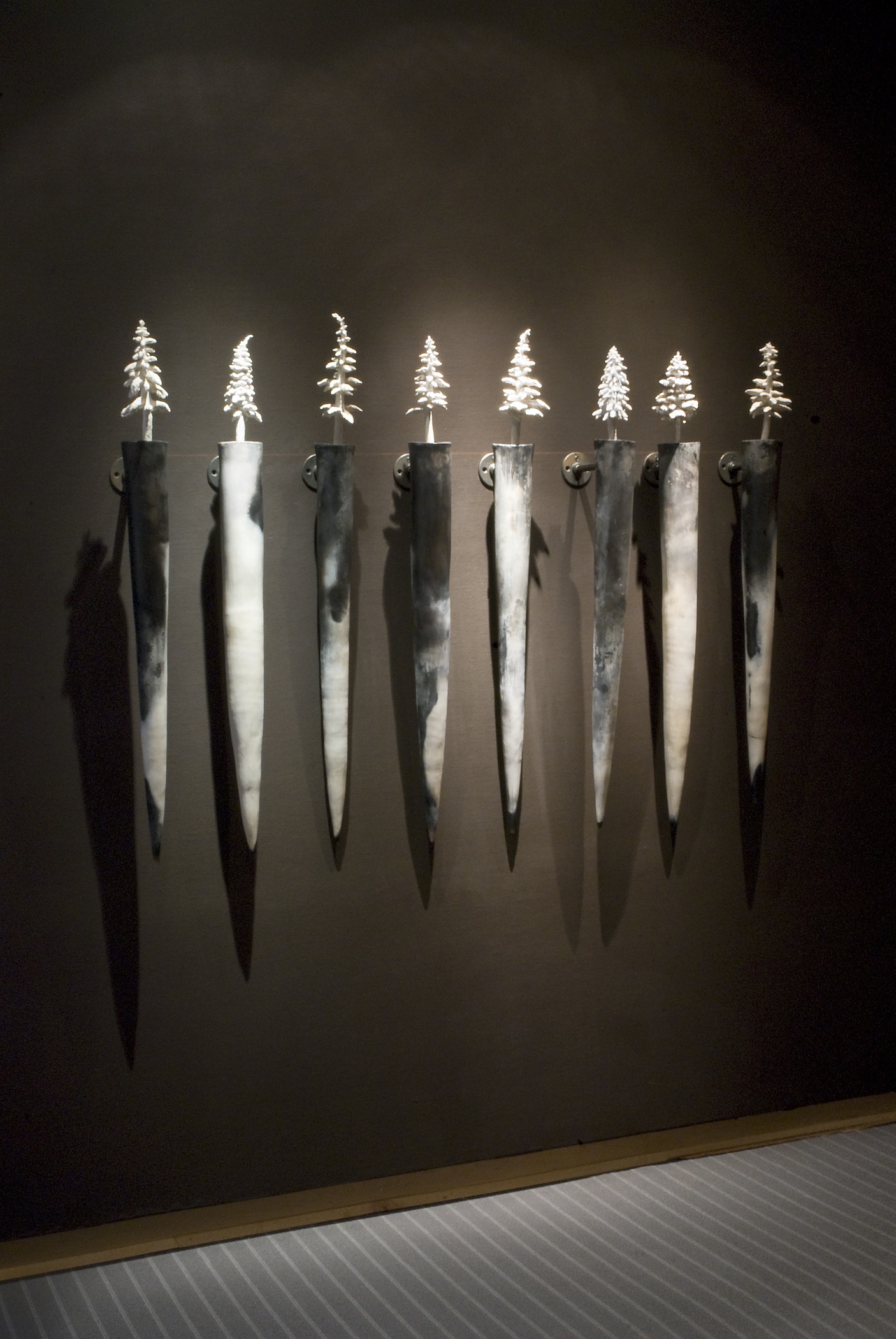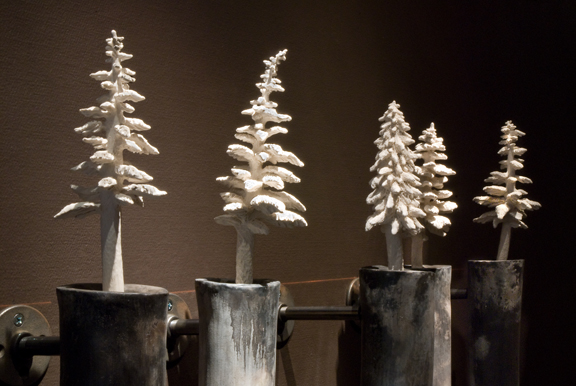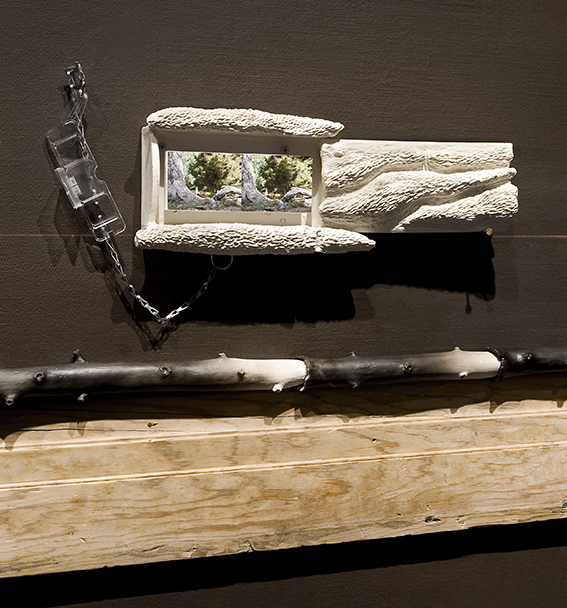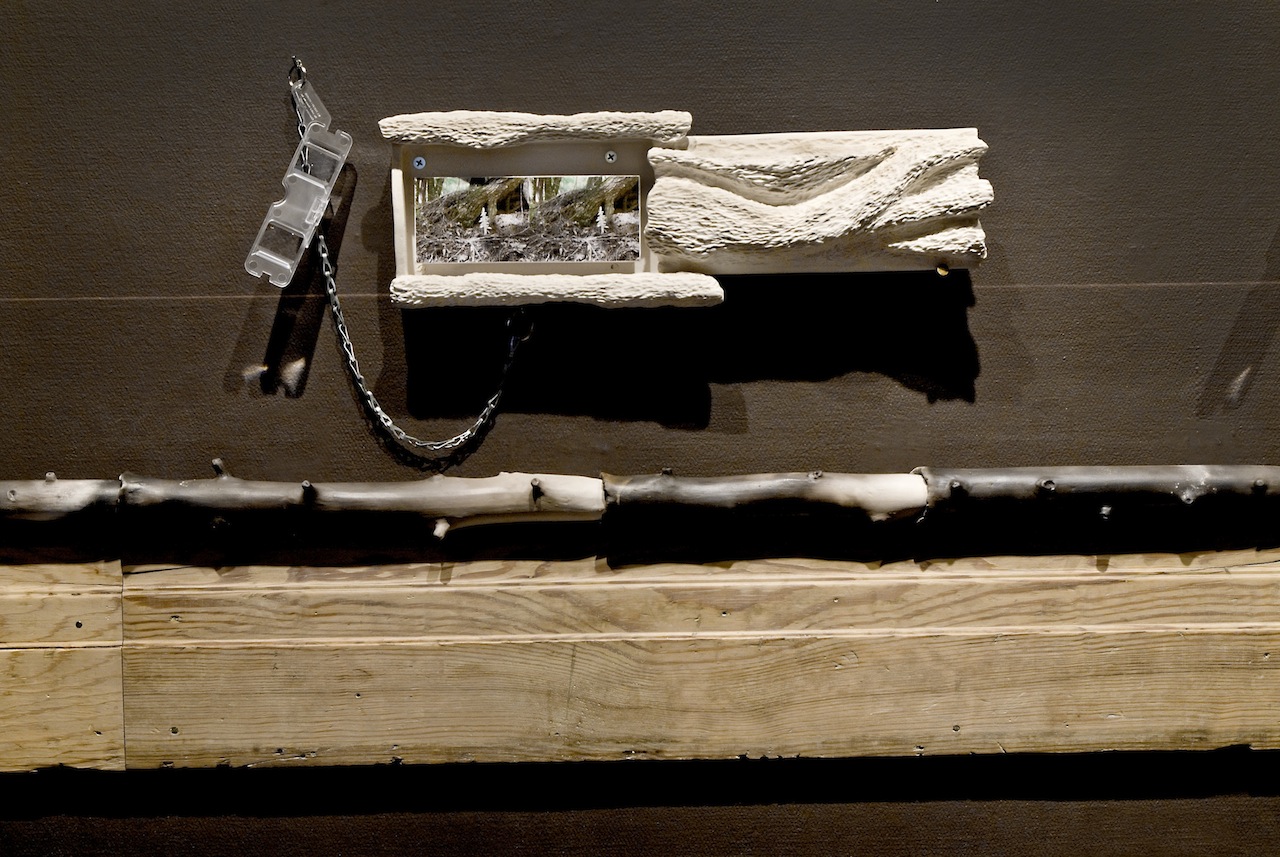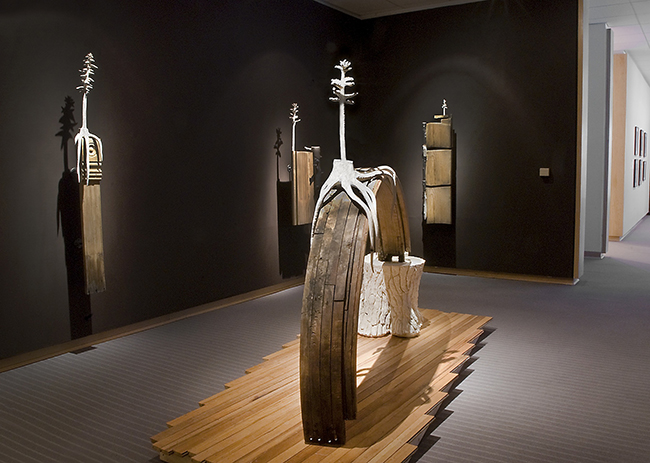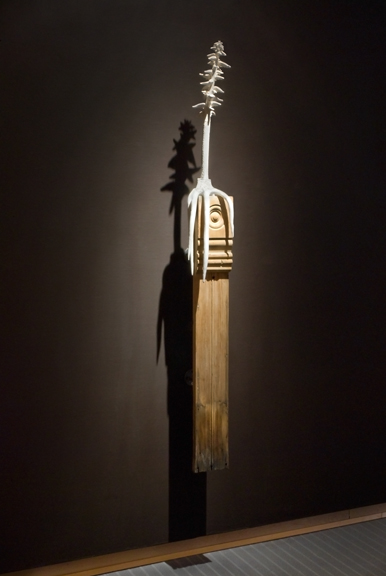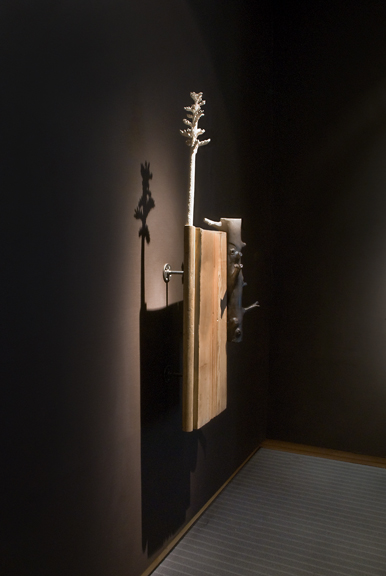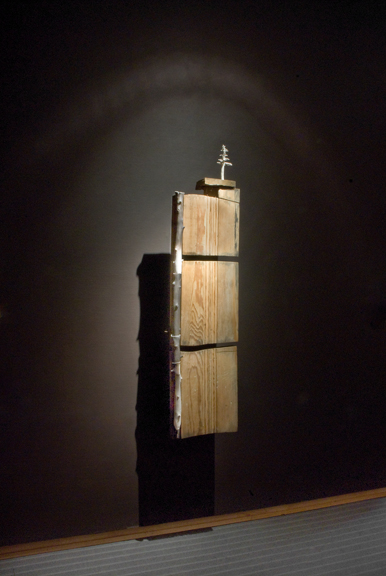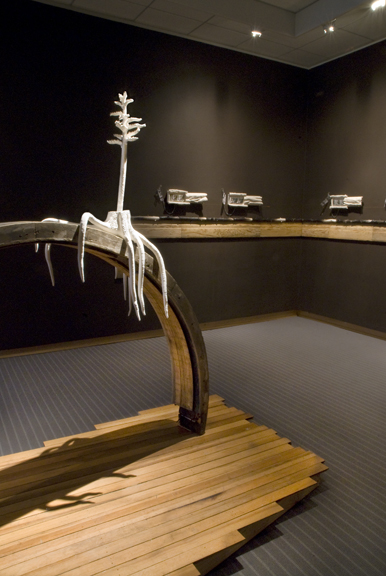I’ve often looked at the interior woodwork in my home and wondered where it came from. I discovered that my wood is called clear pine, and that it’s from old-growth forests because there are no knots in it.
I realized that trees— entire forests— have been sacrificed in order to create secure, well-built shelters, with lumber as well as with beautiful woodwork, both functional and decorative. I wanted to make a connection between the love of the forests I’ve experienced and the love for my home.
In Ghost Trees, I created and brought a series of small porcelain ceramic trees to the Upper Peninsula of Michigan’s Sylvania Wilderness, a place I’d often hiked and camped.
I took stereoscopic photographs of these trees— to capture the depth and magic of the northern woods— at various sites throughout this preserved virgin forest, one of the few such tracts left in the Midwest.
My idea was to return the spirit of my woodwork back to its original home. I read that most old-growth forests in the Upper Midwest were logged to virtual extinction in a mere 20-year period in the 19th century.
I chose to use porcelain clay for the Ghost Trees because the whiteness of the clay carries many meanings. In our culture, the color of white often symbolizes purity, holiness, virginity. In other parts of the world, however, its absence of color signifies loss, death, nothingness.
I sought to reflect on the beauty and value of old-growth trees, as well as on their cyclical historical layers of life upon death. It is how the
forest naturally sustains itself and regenerates.
Trees are sacrificed and transformed through lumbering to produce shelter. The tension between our appreciation of trees and the destruction of them in order to sustain our existence is a difficult balance.
How do we develop a sound sustainable way of thinking and acting that reconciles these conflicting concerns?
